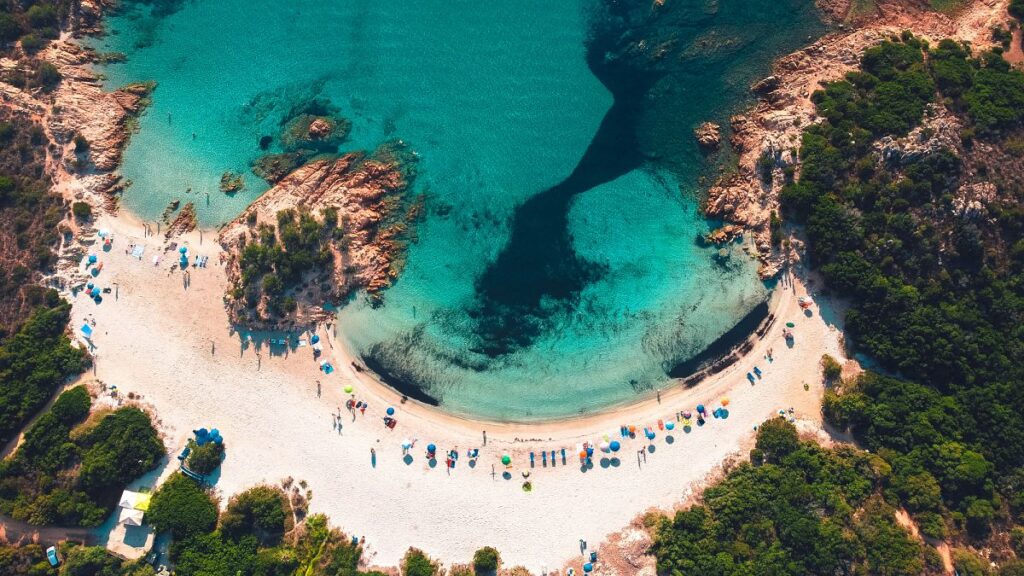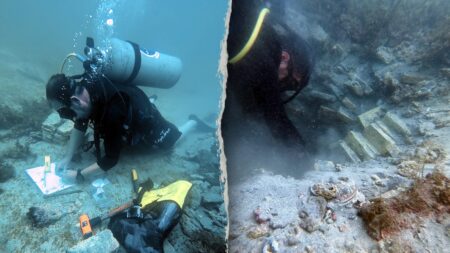With summer around the corner, searches for beach holidays are soaring.
But reading online reviews to find the perfect seaside spot can often be an exercise in tired cliches of golden sands and turquoise water.
The annual ranking by The World’s 50 Best Beaches goes a little deeper – and makes nature a priority.
“Amidst the vast array of stunning shorelines, we realised that discovering and experiencing truly exceptional beaches is far more difficult than it seems,” the company writes.
“Our 2025 list is a culmination of countless days spent by our judges, Beach Ambassadors and World’s 50 Beaches team exploring beaches all over the world.”
So, how does the selection process work and which two European beaches made it into the top 10?
A beach ranking that values more than just beauty
The company uses a multi-stage process to select the top seaside spots out of hundreds of thousands around the globe.
Each year, they reach out to thousands of the world’s most experienced travel professionals and ask them to vote for what they think is the best beach on Earth.
Voters are not given any specific criteria for this, but they are asked to describe why they think the beach deserves to be included.
Once all votes are cast, the team reviews each submission thoroughly and debates the merits of each beach that received a vote.
They then collaborate with their Beach Ambassadors, a carefully chosen group of individuals renowned for their extensive travel experiences, particularly to the world’s top beaches.
The team then compiles the final list, taking into account a range of specific criteria.
This includes a unique surrounding landscape, the chance to encounter wildlife on the shore or in the water, a soundtrack that only features the noises of the ocean and nature, a spot off the beaten path and in a pristine state, calm water, and few crowds.
Cala Goloritzé in Italy is the world’s best beach
Topping the European and world rankings is Cala Goloritzé on the Italian island of Sardinia.
“Its raw beauty has a way of touching you emotionally the moment you lay eyes on it,” the Best Beaches description reads. “Whether you’re looking down from the viewpoint above or standing at the shore with your feet in the water, the scene is truly breathtaking.”
While the entire Baunei Coast is magnificent, Cala Goloritzé stands out, thanks in part to its dramatic 143-metre limestone pinnacle, reminiscent of the soaring spire of a Gothic cathedral.
The water is clear and perfect for swimming, but what sets this beach apart are strong conservation efforts aimed at it, the judges say.
Declared a natural monument in the 1990s, Cala Goloritzé remains remarkably well preserved.
Access is limited to those who hike in – with a restricted number of tickets sold daily – or to swimmers arriving from boats moored 200 metres away, behind a protective barrier that keeps the beach free from boat traffic.
Fteri beach in Greece is a haven for nature lovers
Fteri Beach on Kefalonia, Greece, came fourth in the world rankings. It is tucked away in a secluded cove and is accessible by boat or via a hike down a steep trail.
Its isolation contributes to its untainted, serene atmosphere, setting it apart from more tourist-heavy destinations.
“Majestic white cliffs frame the beach, curving around a stretch of striking white pebbles mixed with sand, which meets the crystal-clear turquoise waters of the Ionian Sea,” the description reads.
“The untouched beauty and tranquil environment of Fteri Beach make it a haven for those in search of peace and a deep connection with nature.”
Greece and Spain have some of the best beaches in the world
Two other European beaches made it into the global top 20.
Voutoumi Beach on the Greek island of Antipaxos, which came in 16th, is primarily accessible by boat, keeping it quiet and pristine compared to the country’s more easily reachable beaches.
It is renowned for its deep blue waters that are shallow and warm by the shore, ideal for floating for hours under the sun.
The beach is a pretty blend of pebbles and fine white sand, lying at the bottom of a steep, green hill peppered with cypress trees.
In 18th place is Playa de Rodas, a gently curved beach about 700 metres long, located in the Cíes Islands off the coast of Galicia, Spain.
It is often hailed as one of Europe’s most beautiful bays, featuring soft white sand and clear, calm waters.
Many refer to Playa de Rodas as a Caribbean-like paradise, but with the cool, refreshing waters of the Atlantic.
The surroundings are equally breathtaking, with the beach backed by lush pine forests and sand dunes.
The only way to reach it is by boat, ensuring a tranquil escape where visitors can swim, sunbathe, or explore the surrounding trails without large crowds.
Read the full article here







